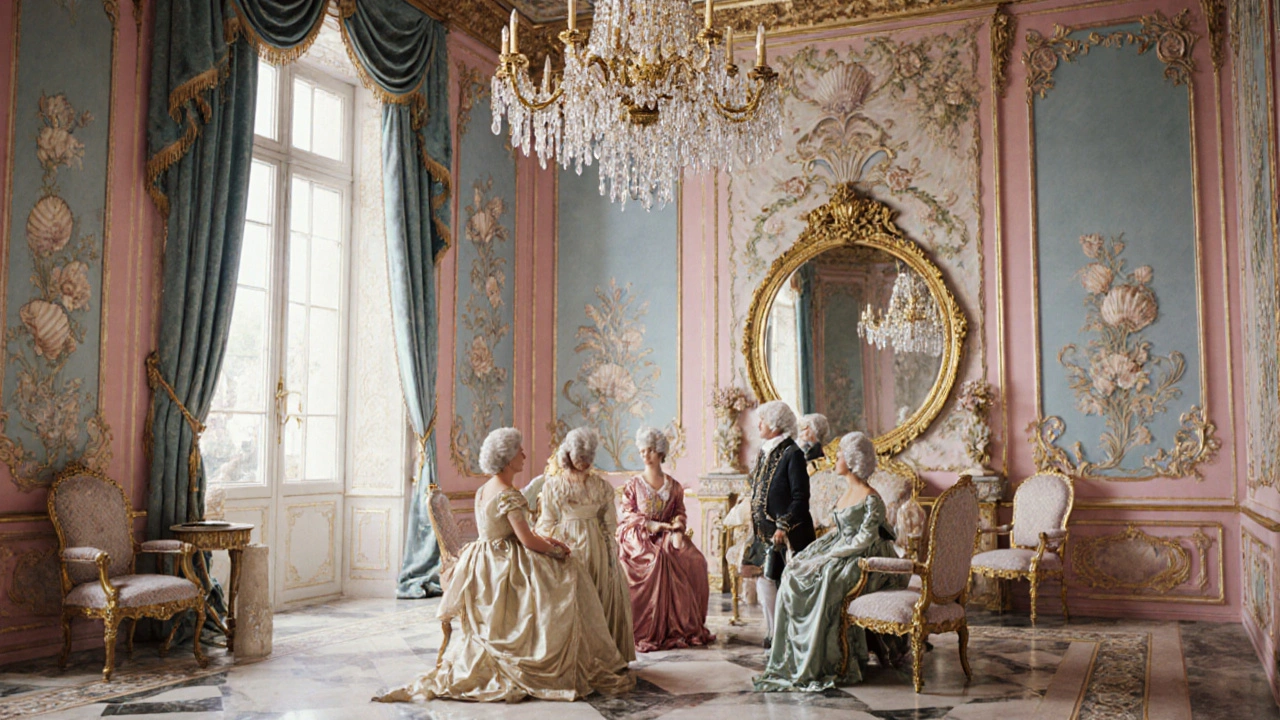Explore the rise and fall of Rococo, the playful French art style of the 18th century, its key artists, signature elements, and lasting impact on design.
Rococo Painting: Light, Playful, and Ornamental Art
When you hear Rococo painting, a flamboyant 18th‑century style known for pastel hues, flowing curves, and whimsical details, Rococo art comes to mind, think of airy salon walls and garden‑room frescoes that feel both elegant and carefree. Unlike the solemn grandeur of earlier periods, Rococo celebrates intimacy, flirtation, and the joy of everyday moments. It encompasses decorative motifs like shells, scrolls, and asymmetrical foliage, all rendered in a soft palette of pinks, blues, and ivory. The movement didn’t appear in a vacuum; it draws from Baroque art (Baroque art, the dramatic, high‑contrast style of the 17th century that emphasized movement and emotional intensity) while shedding its heaviness for a lighter, more playful spirit. At the same time, French interior design, the lavish décor of aristocratic homes in the 1700s that blended architecture, furniture, and art into a single harmonious scene acted as a perfect canvas, letting painters fill rooms with airy trompe‑l’œil ceilings and intimate vignette panels. In short, Rococo painting is a visual conversation between painters, architects, and interior designers, each feeding the other’s love for elegance and exuberance.
Key Features and Related Elements
To truly grasp Rococo painting, you need to spot three core ingredients that recur across the genre. First, the decorative motifs, repeating patterns of shells, roses, and foliage that create a sense of movement without overwhelming the eye give every work a rhythmic flow. Second, the pastel color palette—soft blues, blush pinks, creamy whites—softens the visual impact and invites the viewer to linger. Third, the subject matter often leans toward the romantic or mythological, showing love affairs, playful angels, or leisurely garden scenes. These traits don’t live in isolation; they influence French interior design, which in turn reuses the same motifs and colors on walls, furniture, and even textiles. For example, a ceiling fresco might echo the same shell pattern found on a silk curtain, creating a seamless decorative language throughout a space. This cross‑disciplinary dialogue also links Rococo painting to other artistic currents of the era, such as the emerging Neoclassicism, a return to classical simplicity that began as a reaction against Rococo’s excess. While Neoclassicism pushed for restraint, it borrowed Rococo’s attention to detail, showing how styles continuously converse, adapt, and evolve.
If you’re curious about how Rococo painting fits into the broader story of art and architecture, the collection below will give you plenty of material. You’ll see how Baroque architecture’s grand arches set the stage for Rococo’s lighter interiors, how Georgian buildings sometimes adopted Rococo’s decorative flair, and how high‑tech modern designs still echo the playful curves of the 18th century. Each article unpacks a different facet—whether it’s the symbolism behind a shell motif, the way pastel hues changed interior lighting, or the technical tricks painters used to achieve a delicate sheen. By the time you finish scrolling, you’ll have a solid grasp of Rococo painting’s signature style, its historic partners, and why the movement still feels fresh in today’s design world. Ready to explore the colorful world of Rococo and its many connections? Dive into the posts below and discover the playful elegance that still inspires creators across disciplines.

